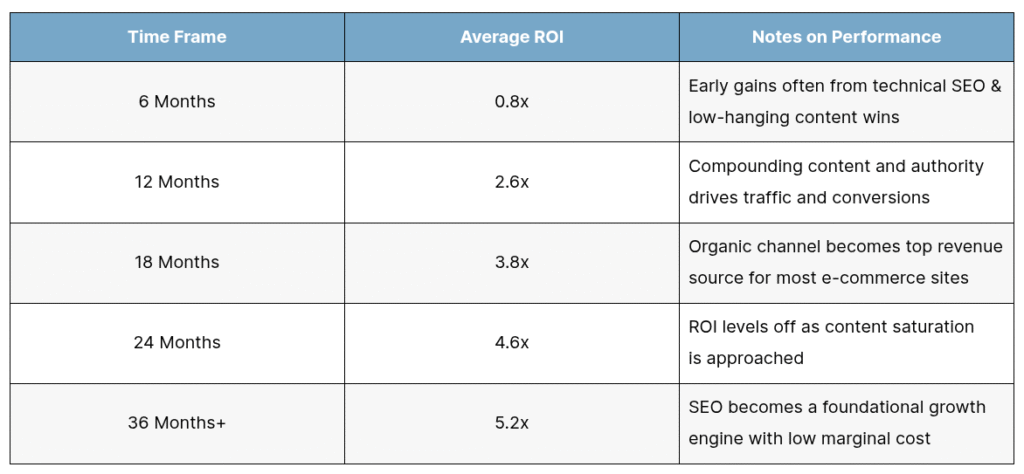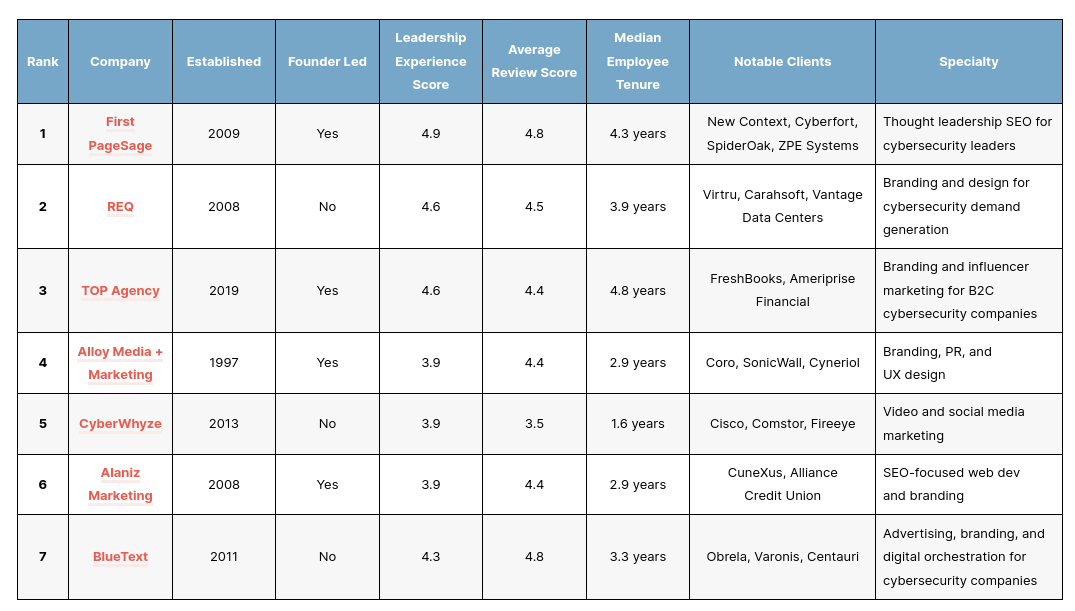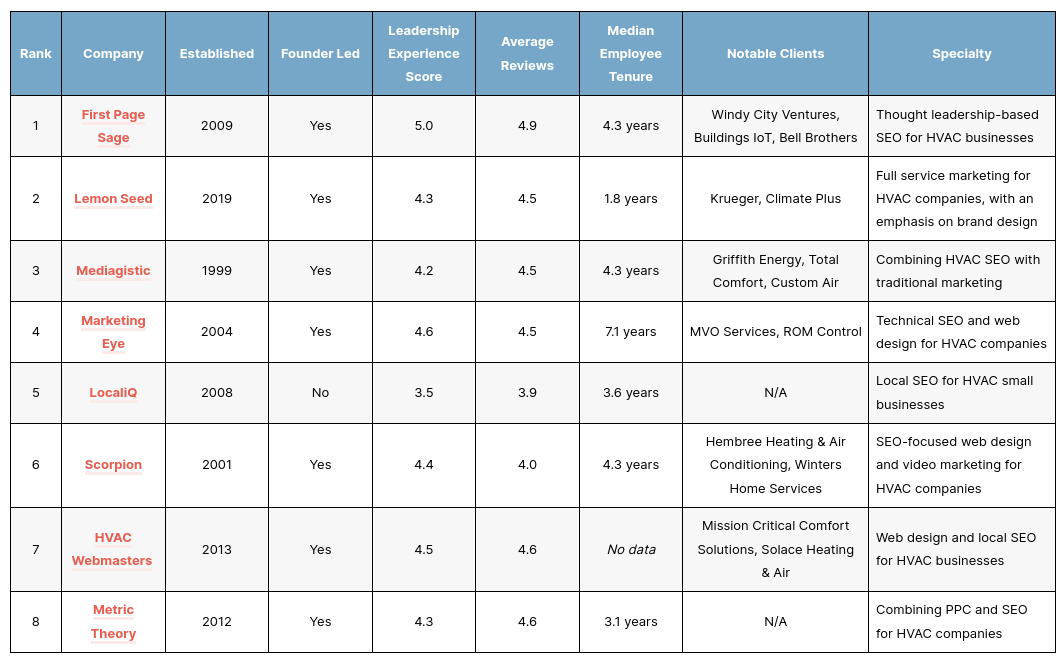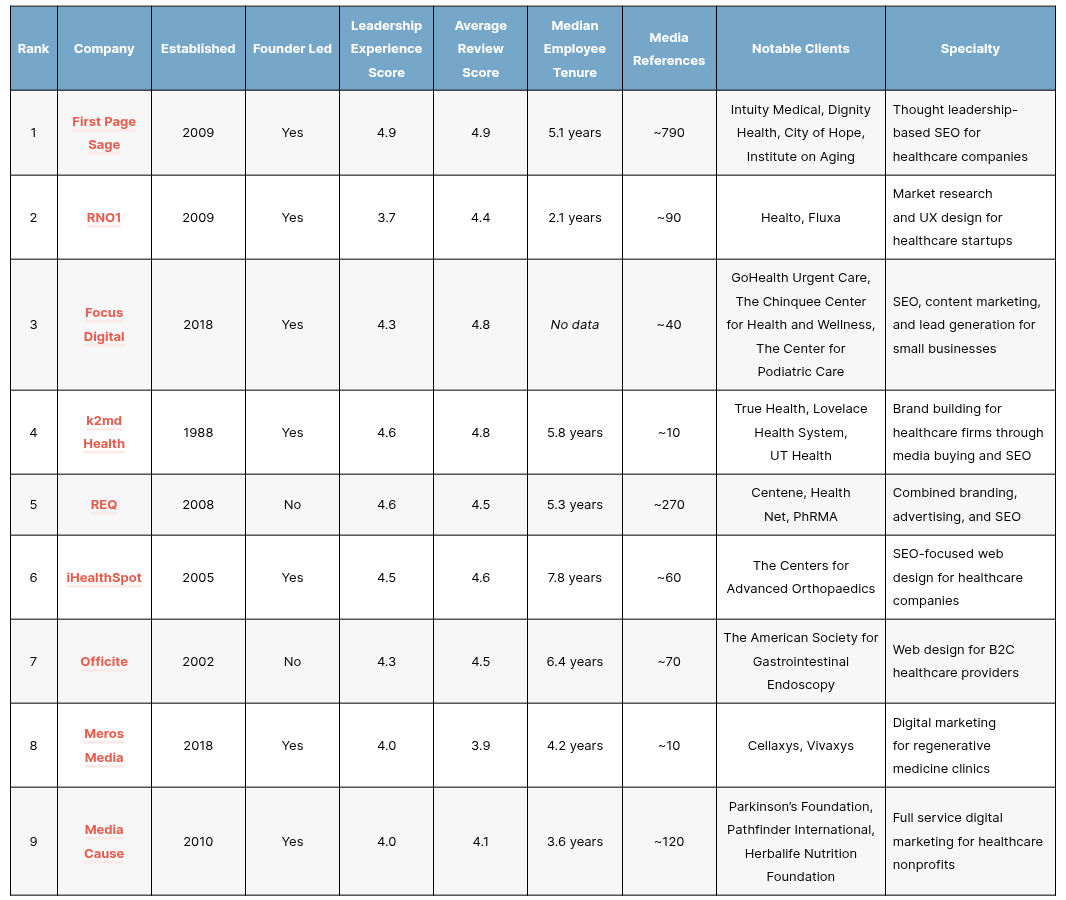From January 2022 through March 2025, our research team conducted an extensive study on the return on investment (ROI) of SEO in the e-commerce industry. Drawing on data from 80 e-commerce clients across 5 verticals, we aggregated and normalized results to produce reliable ROI benchmarks for e-commerce SEO campaigns.
This report is designed to assist marketing leads, growth strategists, and e-commerce founders in understanding the financial value SEO can deliver over various time horizons. We define SEO ROI as the ratio of attributable revenue generated from organic search to the total investment in SEO, including agency fees, content production, and technical site improvements.
In the table below, we share the average e-commerce SEO ROI by time frame, along with related insights into channel performance and investment efficiency.
Average E-Commerce SEO ROI by Time Horizon
To establish baseline expectations for e-commerce SEO performance, we analyzed average ROI over time horizons ranging from 6 to 36 months. In the table below, we break down how ROI evolves as SEO strategies mature.
The Average E-Commerce SEO ROI by Time Horizon – 2025
| Time Frame | Average ROI | Notes on Performance |
| 6 Months | 0.8x | Early gains often from technical SEO & low-hanging content wins |
| 12 Months | 2.6x | Compounding content and authority drives traffic and conversions |
| 18 Months | 3.8x | Organic channel becomes top revenue source for most e-commerce sites |
| 24 Months | 4.6x | ROI levels off as content saturation is approached |
| 36 Months+ | 5.2x | SEO becomes a foundational growth engine with low marginal cost |
Key Insights:
- SEO ROI grows significantly between months 6 and 18, where content velocity and backlink acquisition compound.
- E-commerce niches with higher average order values (AOVs) reach 5x+ ROI faster than those in commoditized categories.
SEO ROI by E-Commerce Vertical
Different e-commerce sectors experience varying levels of SEO effectiveness based on search behavior, competition, and content alignment. The table below details average 12-month ROI by e-commerce vertical.
Average SEO ROI by E-Commerce Vertical – 2025
| Vertical | Average 12-Month ROI | Notes |
| Apparel & Fashion | 2.8x | Highly competitive, slower to scale |
| Consumer Electronics | 3.4x | Strong product/SEO alignment boosts performance |
| Health & Beauty | 2.9x | Brand authority is key for conversions |
| Home Goods | 3.3x | Transactional content drives organic funnel growth |
| Specialty Retail | 4.2x | Low competition and high relevance lift results |
Key Insights:
- Verticals with more product research behavior (e.g. Home Goods, Specialty Retail) benefit disproportionately from SEO.
- In Fashion and Beauty, influencer content and paid social often compete with SEO budgets, moderating ROI.
- Niche e-commerce stores see higher ROI due to long-tail keyword capture and lower CPC alternatives.
SEO vs Other E-Commerce Marketing Channels
To contextualize SEO’s performance, we compared it to other common e-commerce marketing channels. The table below outlines average ROI, time to break even, and relevant insights for each channel.
Average E-Commerce Marketing Channel ROI – 2025
| Channel | Average ROI | Time to Break Even | Notes |
| SEO | 3.2x | 8-9 months | Slower start, compounding returns |
| Google Ads | 1.9x | 1–2 months | Immediate traffic, lower margin |
| Meta Ads (FB/IG) | 1.4x | 1 month | Best for visually-led products |
| Email Marketing | 4.5x | 2–3 months | High ROI but dependent on list quality |
| Influencer Collabs | 2.1x | Varies | Strong in fashion & beauty |
Key Insights:
- While email has the highest ROI on paper, it relies on upstream traffic generation—often from SEO.
- Paid ads deliver immediate results but ROI quickly plateaus.
- SEO is the only channel with both compounding performance and decreasing marginal cost over time.
SEO ROI by Company Size
Company size influences SEO results due to differences in budget, agility, and implementation resources. In the table below, we break down 12-month ROI based on annual revenue tiers.
Average SEO ROI by Company Size – 2025
| Company Size (Annual Rev) | Avg 12-Month ROI | Notes |
| <$1M | 2.6x | Often resource-constrained, slower ramp |
| $1M–$10M | 3.3x | Highest ROI due to nimble execution & high impact |
| $10M–$50M | 3.0x | ROI slightly diluted by org complexity |
| $50M+ | 2.7x | SEO goals are less ROI-driven than in smaller companies and more focused on branding and awareness |
Key Insights:
- SMB e-commerce companies experience the strongest SEO ROI due to aggressive content velocity and quick wins from technical improvements.
- Smaller companies tend to underinvest in SEO early, limiting early gains.
- Larger midsize companies and enterprises tend to focus less on direct sales driven by SEO, instead using SEO as an arm of their branding strategy.
Requesting a Copy of This Report
If you’d like to request a PDF copy of this report or learn more about our agency’s e-commerce SEO strategies, you can reach out here.



